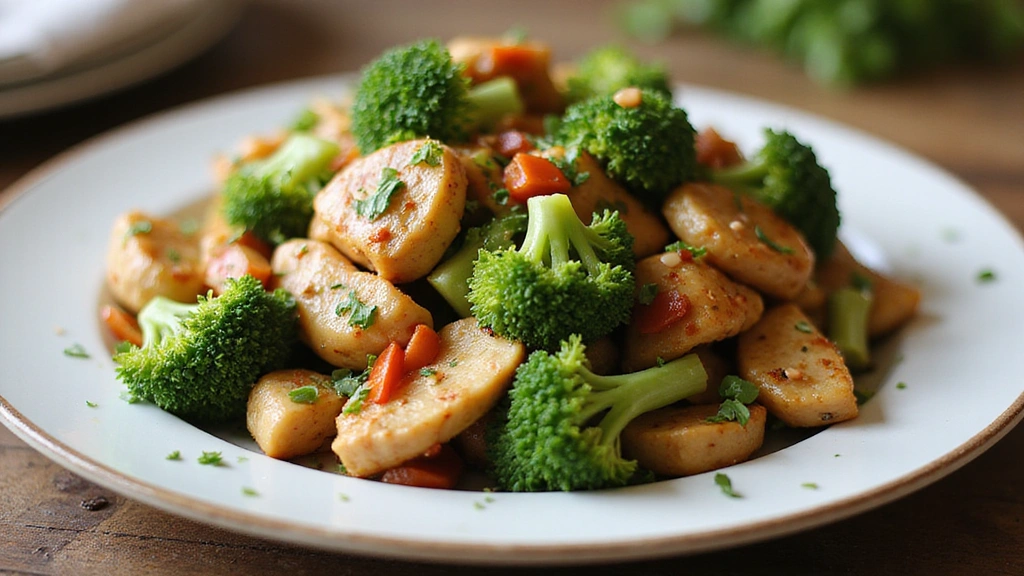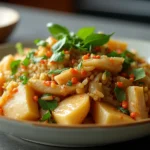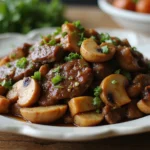Chicken and Broccoli is a beloved staple in Chinese cuisine that seamlessly combines tender chicken and crisp broccoli in a savory sauce.
Each bite offers a delightful balance of flavors, with the succulent chicken offsetting the fresh crunch of broccoli.
This dish holds a special place in my heart as it was a family favorite during my childhood, often served during gatherings and celebrations.
Whether you’re looking for a quick weeknight meal or a comforting dish to share with loved ones, this recipe is sure to impress.
The History and Cultural Significance
• Chicken and Broccoli Chinese Recipe Family Favorite Dinner traces its origins to American-Chinese cuisine that emerged in the mid-20th century, reflecting a fusion of flavors adapted to local tastes.
• The dish evolved over decades as chefs began incorporating fresh vegetables and lean proteins, eventually becoming a staple in many households across the U.S.
• In American culture, this dish traditionally appears at family dinners and takeout nights, symbolizing comfort and togetherness.
• While many variations exist, the authentic version maintains a simple yet flavorful sauce that enhances the natural tastes of the chicken and broccoli.
Recipe Overview
Nutritional Information (per serving)
Ingredients
Essential Equipment Guide
Wok: A wok is essential for achieving the high heat needed for quick stir-frying, which helps maintain the texture of the chicken and broccoli. Look for a carbon steel wok for authentic results, which heats evenly and develops a natural non-stick surface over time.
Chef’s Knife: A sharp, high-quality chef’s knife is crucial for precise cutting of ingredients. A well-balanced knife will make it easier to chop, slice, and dice vegetables and chicken efficiently.
Cutting Board: A sturdy cutting board provides a safe surface for chopping and prepping ingredients. Opt for a wooden or plastic board that can withstand the rigors of frequent use without dulling your knife.
Preparation Methods
Marinating Chicken: Marinating the chicken in soy sauce and cornstarch helps to tenderize the meat and infuse it with flavor. Allow it to sit for at least 15 minutes to maximize the benefits of the marinade.
Stir-Frying: This technique involves cooking ingredients quickly over high heat, which preserves their texture and flavor. Ensure your wok is preheated before adding the oil to achieve a good sear on the chicken and vegetables.
Thickening the Sauce: Adding cornstarch to the sauce helps to create a glossy finish that clings to the chicken and broccoli. Mix the cornstarch with a small amount of cold water before incorporating it into the sauce to avoid clumping.
Step 1: Prepare Ingredients
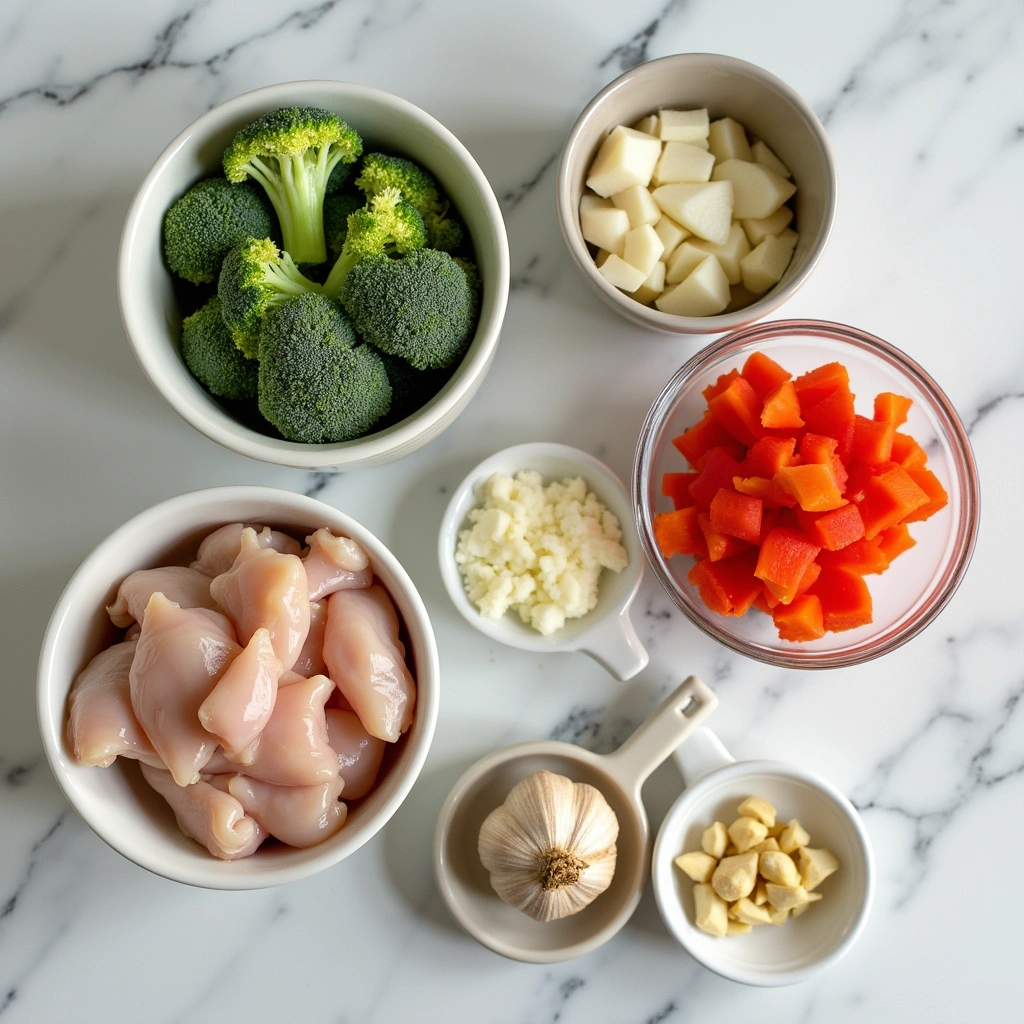
Begin by gathering all your ingredients and measuring them out.
Slice the chicken breast into thin strips for quick cooking.
Chop the broccoli into bite-sized florets and slice the bell pepper.
Mince the garlic and ginger finely to release their flavors.
Step 2: Marinate the Chicken

In a bowl, combine the sliced chicken, soy sauce, and cornstarch.
Toss the chicken well to ensure that all pieces are coated evenly.
Let the chicken marinate for about 15 minutes to absorb the flavors.
This step is crucial for enhancing the taste and texture of the chicken.
Step 3: Heat the Wok

Place your wok over high heat and allow it to preheat for a few minutes.
Add the vegetable oil and swirl it around to coat the sides of the wok.
You should see a shimmer on the oil, indicating it’s hot enough for cooking.
This high heat is essential for achieving a good sear on the chicken.
Step 4: Cook the Chicken
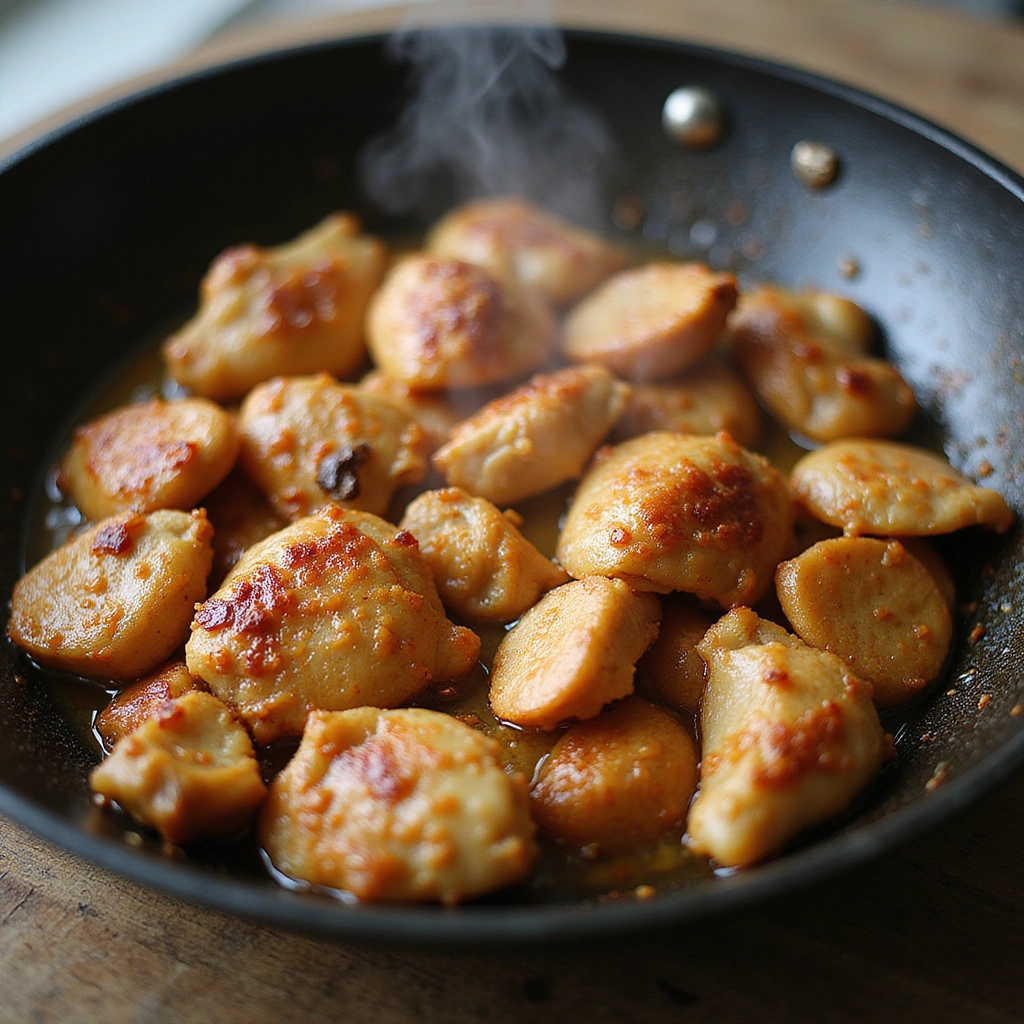
Carefully add the marinated chicken to the hot wok, spreading it out in a single layer.
Allow it to sear for about 3-4 minutes without stirring to develop a nice color.
Once browned, stir-fry the chicken for an additional 2 minutes until cooked through.
This method ensures the chicken stays tender and juicy.
Step 5: Add the Vegetables
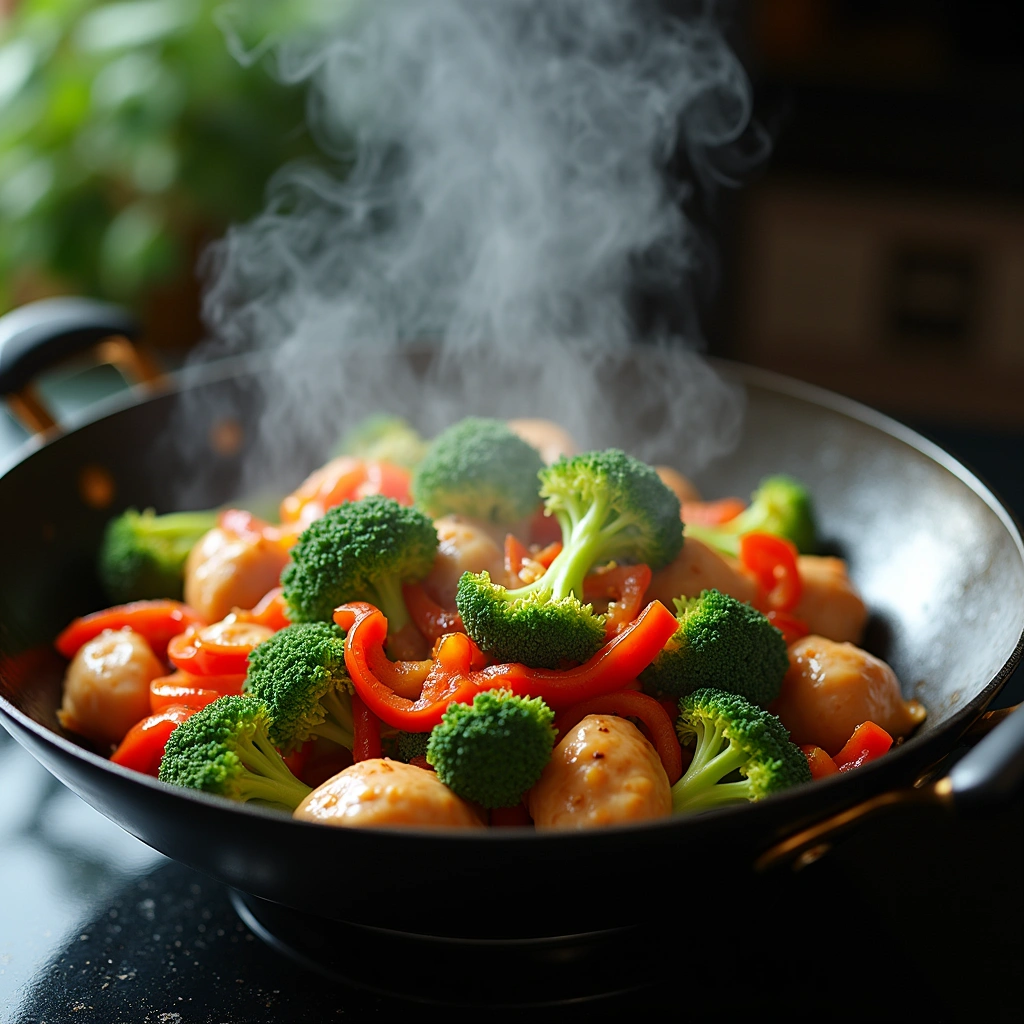
Once the chicken is cooked, add the broccoli florets and sliced bell pepper to the wok.
Stir-fry the vegetables for about 2-3 minutes until they are bright and crisp-tender.
Be sure to keep the ingredients moving to prevent burning.
This step helps to retain the nutrients and vibrant color of the vegetables.
Step 6: Prepare the Sauce
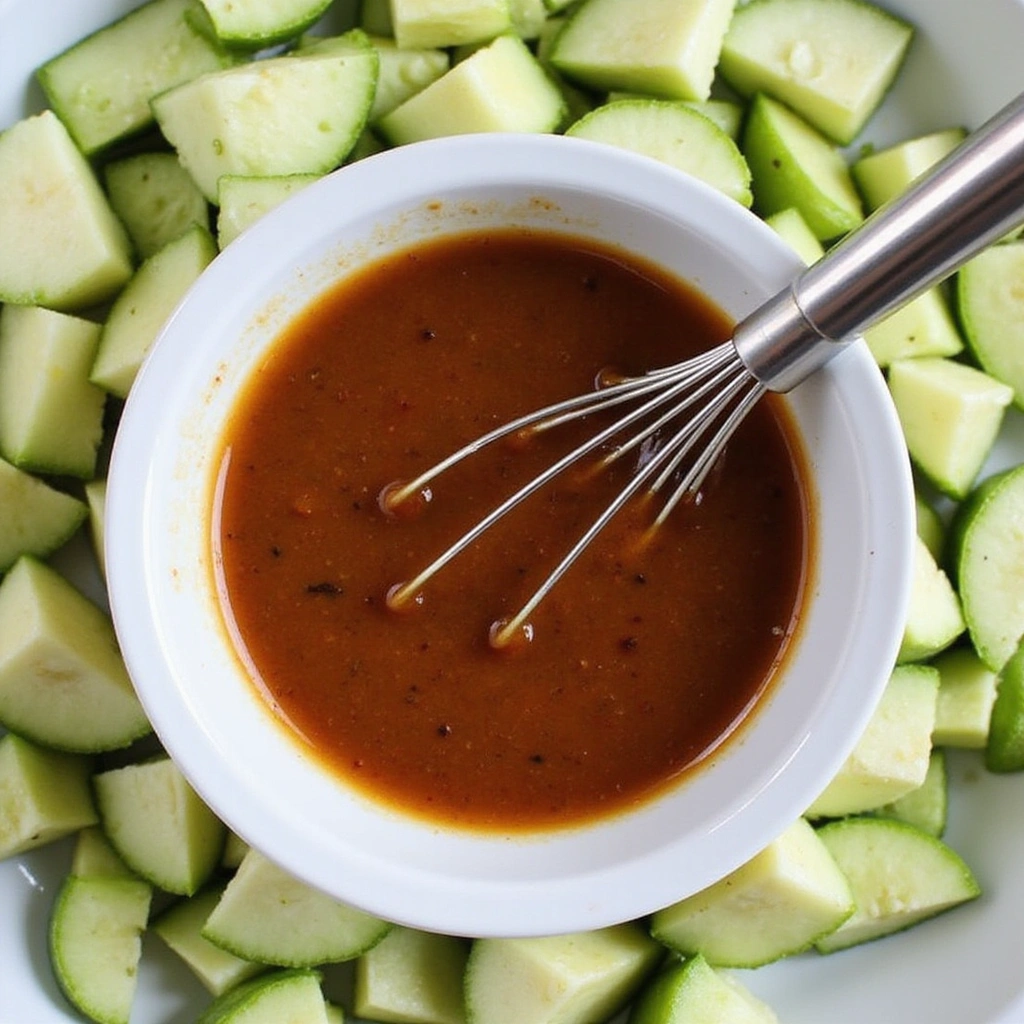
In a small bowl, whisk together the soy sauce, oyster sauce, chicken broth, and cornstarch mixed with water.
Make sure there are no lumps in the cornstarch mixture to ensure a smooth sauce.
This combination will create a flavorful and glossy finish for the dish.
Have this sauce ready to add quickly once the vegetables are cooked.
Step 7: Combine Everything
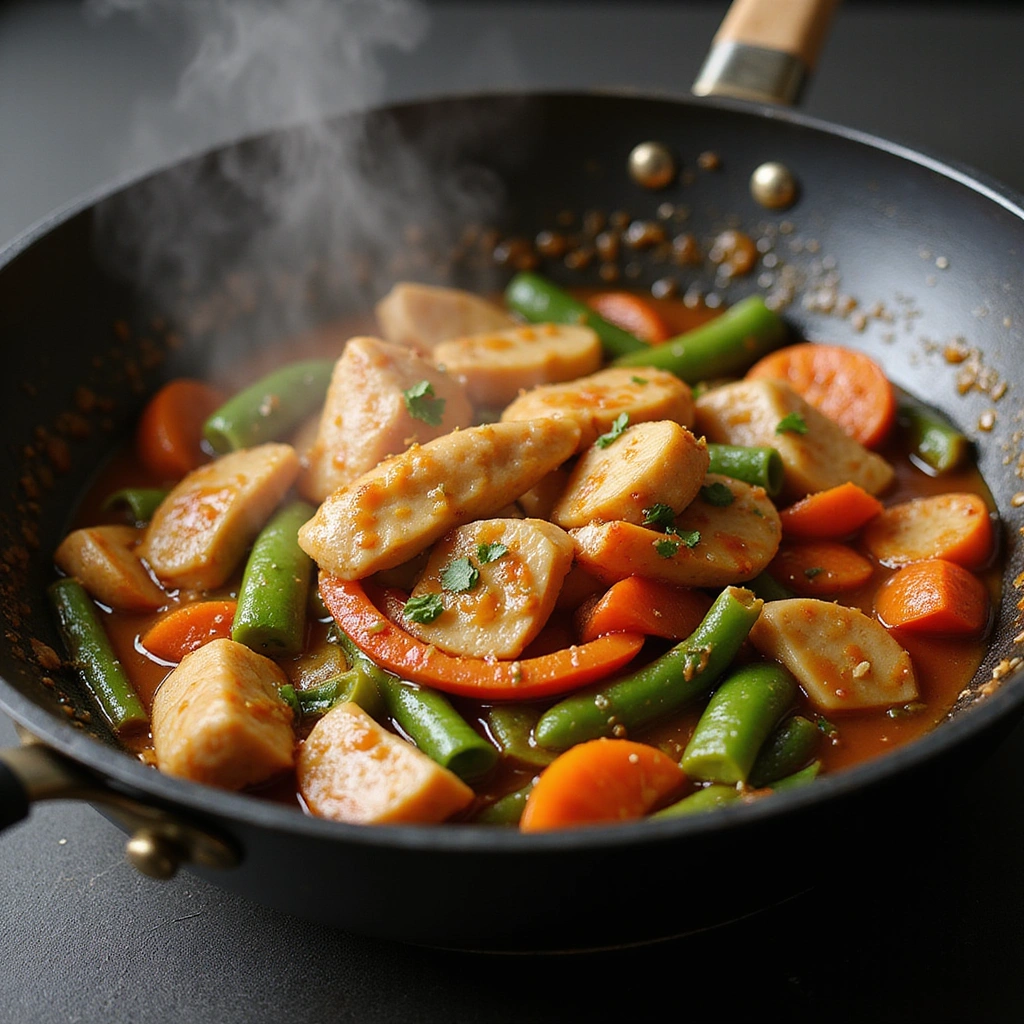
Pour the prepared sauce over the chicken and vegetables in the wok.
Stir well to coat everything evenly and cook for another 1-2 minutes until the sauce thickens.
Watch for the sauce to bubble and become glossy, indicating it’s ready.
This step brings all the flavors together into a cohesive dish.
Step 8: Finish and Serve

Remove the wok from heat and drizzle sesame oil over the dish for added flavor.
Give everything a final stir to combine the flavors.
Serve the Chicken and Broccoli hot over steamed rice or noodles.
Garnish with sesame seeds and green onions for an attractive presentation.
Critical Timing and Temperature Guide
Marinating Chicken: Allow the chicken to marinate for at least 15 minutes but no more than 2 hours in the refrigerator. Over-marinating can result in a mushy texture. Look for the chicken to absorb the marinade’s color.
Cooking Chicken: Cook the chicken in the wok for 6-8 minutes total, ensuring it reaches an internal temperature of 165°F (75°C). The chicken should be golden brown on the outside but juicy on the inside. Avoid overcrowding the wok, as this can lead to steaming rather than searing.
Cooking Vegetables: Stir-fry the vegetables for 2-3 minutes until they maintain their vibrant color and crispness. They should be tender but not mushy. Overcooking will diminish their nutritional value and texture.
Pro Tips for Chicken And Broccoli Chinese Recipe Family Favorite Dinner
• Ingredient Selection: Choosing fresh broccoli and high-quality chicken breast makes a significant difference in flavor and texture.
• Preparation Secret: Consider blanching the broccoli briefly before stir-frying to enhance its color and tenderness.
• Temperature Management: Ensure your wok is properly preheated to achieve that characteristic stir-fry sear.
• Texture Enhancement: For extra crunch, add the broccoli for the last minute of cooking.
• Flavor Layering: Experiment with adding a dash of rice vinegar or chili paste for an extra layer of complexity.
• Make-Ahead Strategies: Prep all ingredients in advance and store them separately in the fridge for quick assembly when you’re ready to cook.
• Restaurant-Quality Finishing Touches: Serve with a sprinkle of toasted sesame seeds and sliced green onions for a professional look.
• Equipment Optimization: If you don’t have a wok, a large skillet can work, but ensure it has high sides to handle the stir-frying.
Troubleshooting Common Issues
• Chicken Too Dry: Overcooking can lead to dry chicken. Use a meat thermometer to check for doneness and remove the chicken from heat once it reaches 165°F (75°C).
• Sauce Too Thin: If the sauce doesn’t thicken, mix an additional teaspoon of cornstarch with cold water and add it to the wok while stirring.
• Vegetables Soggy: Stir-fry vegetables on high heat and avoid overcooking them to retain their crispness. Add them later in the cooking process.
• Flavors Unbalanced: Taste the dish before serving; if it’s too salty, add a pinch of sugar. If it’s bland, consider adjusting the soy sauce or adding more garlic.
• Sticking to the Wok: Ensure the wok is hot enough and the oil is preheated before adding ingredients. This will help prevent sticking.
Variations and Regional Differences
• Beef and Broccoli: In this variation, tender strips of beef replace chicken, often marinated in a similar sauce, providing a richer flavor profile.
• Vegetable-Only Version: A vegetarian option that includes a variety of colorful vegetables like carrots and bell peppers, with tofu for protein.
• Spicy Chicken and Broccoli: This version includes chili paste or fresh chilies for heat, appealing to those who enjoy spicier dishes.
• Modern Interpretations: Incorporating quinoa or brown rice instead of white rice caters to health-conscious eaters while maintaining the dish’s integrity.
Food Science Behind the Recipe
• Maillard Reaction: This chemical reaction occurs when proteins and sugars in the chicken are exposed to high heat, creating complex flavors and a golden-brown color. Understanding this helps in achieving a perfect sear.
• Emulsification: When the sauce thickens due to the cornstarch, it creates a smooth coating that clings to the chicken and vegetables, enhancing the mouthfeel and overall enjoyment of the dish.
• Blanching: Briefly cooking broccoli in boiling water before stir-frying helps set its bright green color and retain nutrients, ensuring the vegetables are vibrant and appealing.
Frequently Asked Questions
What’s the most common mistake people make when preparing Chicken and Broccoli? Overcooking the chicken is the most frequent error. To prevent this, use a meat thermometer and remove the chicken once it reaches 165°F (75°C).
Can I prepare components of this dish in advance? Yes, you can marinate the chicken and chop the vegetables a few hours ahead. Store them separately in the refrigerator to keep them fresh.
How do I adapt this recipe for dietary restrictions? For gluten-free options, use tamari instead of soy sauce and ensure all sauces are certified gluten-free.
What’s the best way to store and reheat leftovers? Store leftovers in an airtight container in the fridge for up to 3 days. Reheat in a skillet over medium heat until warmed through.
Can I freeze this dish? Yes, you can freeze the cooked dish for up to 2 months. Thaw in the fridge overnight before reheating.
What wine or beverages pair best with this dish? A light-bodied white wine like Sauvignon Blanc or an iced green tea complements the flavors beautifully.
How can I scale this recipe up for a crowd? Double or triple the ingredients proportionally, but cook in batches to ensure everything is evenly cooked.
What side dishes complement this recipe best? Steamed jasmine rice or fried rice pairs well, along with a side of spring rolls for a complete meal.
How do professional chefs elevate this dish for restaurant service? Chefs often use fresh herbs as garnishes and serve the dish in unique plating styles to enhance the visual appeal.
Serving and Presentation Guide
• Traditional Presentation: Serve Chicken and Broccoli over a bed of fluffy white rice, garnished with sesame seeds and chopped green onions for a classic touch.
• Modern Plating Ideas: Use a wide, shallow bowl and arrange the chicken and broccoli artistically, drizzling sauce artfully around the dish for a contemporary look.
• Accompaniment Suggestions: Pair with steamed dumplings or a light cucumber salad to balance the meal’s flavors.
• Special Occasion Presentation: Present the dish in a large serving platter, garnished with fresh cilantro and lime wedges for an impressive family-style meal.
Conclusion
I hope you enjoy trying this Chicken and Broccoli recipe as much as my family does.
It’s a perfect blend of flavors and textures that brings everyone together at the dinner table.
Don’t hesitate to customize it to your liking and create your own family memories with this dish.

